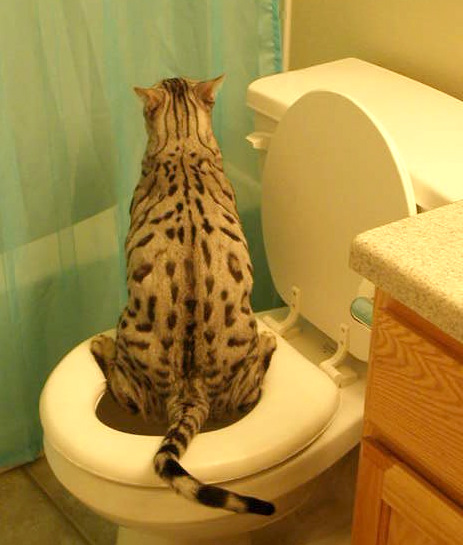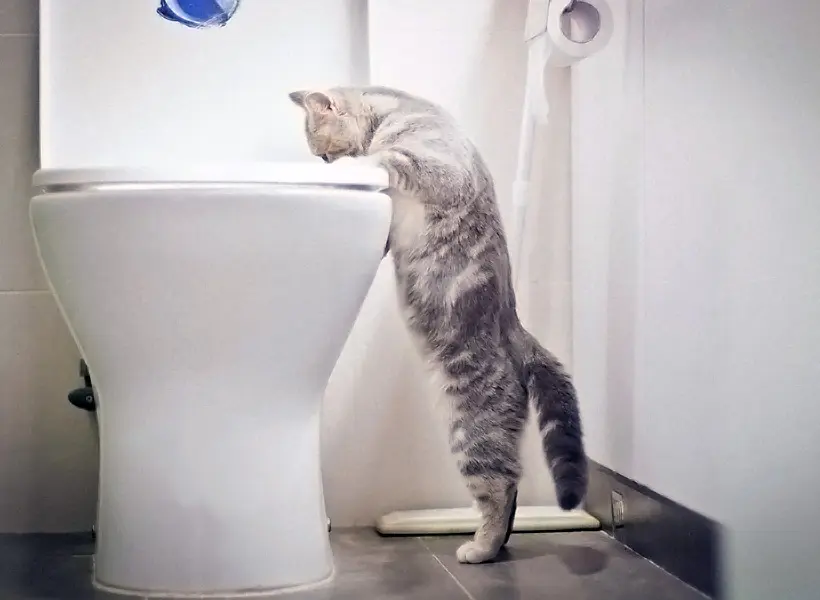Why You Should Never Flush Cat Poop Down Your Toilet - Important Facts
Why You Should Never Flush Cat Poop Down Your Toilet - Important Facts
Blog Article
The content in the next paragraphs pertaining to Don’t flush cat feces down the toilet is rather stimulating. Read it for yourself and figure out what you think about it.

Introduction
As cat proprietors, it's important to be mindful of just how we take care of our feline friends' waste. While it might seem practical to flush feline poop down the bathroom, this technique can have detrimental consequences for both the environment and human health.
Ecological Impact
Flushing pet cat poop introduces unsafe pathogens and bloodsuckers into the water system, posing a considerable threat to marine ecosystems. These pollutants can negatively affect aquatic life and concession water top quality.
Wellness Risks
Along with ecological worries, purging feline waste can likewise pose health threats to human beings. Feline feces may include Toxoplasma gondii, a parasite that can create toxoplasmosis-- a possibly severe health problem, especially for pregnant females and individuals with weakened body immune systems.
Alternatives to Flushing
Luckily, there are safer and extra accountable means to get rid of pet cat poop. Consider the complying with options:
1. Scoop and Dispose in Trash
One of the most usual method of getting rid of pet cat poop is to scoop it right into a naturally degradable bag and toss it in the garbage. Make sure to utilize a committed clutter inside story and dispose of the waste promptly.
2. Use Biodegradable Litter
Opt for naturally degradable pet cat litter made from products such as corn or wheat. These trashes are environmentally friendly and can be safely disposed of in the garbage.
3. Bury in the Yard
If you have a backyard, think about burying feline waste in a designated location away from vegetable yards and water sources. Make certain to dig deep enough to stop contamination of groundwater.
4. Install a Pet Waste Disposal System
Purchase a pet garbage disposal system specifically developed for pet cat waste. These systems use enzymes to break down the waste, minimizing odor and ecological influence.
Conclusion
Accountable pet dog ownership extends beyond giving food and sanctuary-- it also involves correct waste management. By refraining from flushing feline poop down the bathroom and going with alternative disposal techniques, we can reduce our ecological footprint and secure human health and wellness.
Why You Should NEVER Flush Cat Poop (and/or Litter) Down Your Toilet
The Problem with Litter
The main function of litter is to solidify and adhere to your cat’s waste. While this makes litter excellent for collecting cat poop and urine, it’s also the exact property that makes it a nightmare when flushed down the toilet.
Cat litter can and will clog pipes. There is non-clumping litter, but it’s still quite heavy and can build up in pipes. This is true even of supposed “flushable litter.”
The problems only compound when the litter is already clumped into cat waste. Toilet paper is among the more flushable things, and even too much of that will clog a toilet.
The Problem with Cat Poop
Sewers and septic systems are designed with human waste in mind. The microbes that help break down human waste don’t work on cat waste. Additionally, cat poop plays host to the parasite Toxoplasma gondii.
When flushed, this parasite can enter the environment in places it was never meant to, posing a risk to pregnant women, their unborn children, and other people with compromised immune systems. While it might not seem possible, flushing cat poop can indeed introduce this parasite to the public water supply.
These reasons are why, even if you’ve trained your cat to go on the toilet and flush, which is possible, it’s still not a good idea. Also, pregnant women and the immunocompromised shouldn’t change litter, either.
How to Handle Litter
The best way to handle litter is to simply put it in a plastic bag and place it in the trash. Avoiding environmental risks and possible plumbing damage is worth the extra effort.
You can also invest in devices that seal away your cat’s waste in a separate compartment, so you don’t have to change the litter nearly as often. They’re also safer for pet owners because they limit the possibility of Toxoplasma gondii exposure.
Disposing of litter the old-fashioned way will ensure you won’t have to worry about any issues that flushing the waste can potentially cause.
Take Care of Clogged Pipes with Stephens Plumbing, Heating & Air Conditioning
The reasons you should never flush cat poop down your toilet are numerous, but sometimes the inevitable happens despite your best efforts.
Stephens Plumbing, Heating & Air Conditioning is ready to help if you’re experiencing litter-blocked plumbing. Whether you need us in an emergency or want to schedule regular maintenance, we’re here for you.
https://www.stephensplumbing.net/bathroom-plumbing/never-flush-cat-poop-down-your-toilet/

We hope you enjoyed reading our excerpt on How to Dispose of Cat Poop and Litter Without Plastic Bags. Thanks a lot for finding the time to read through our piece. Those who appreciated our article kindly make sure you remember to pass it around. I enjoy reading our article about Don’t flush cat feces down the toilet.
Visit Website Report this page